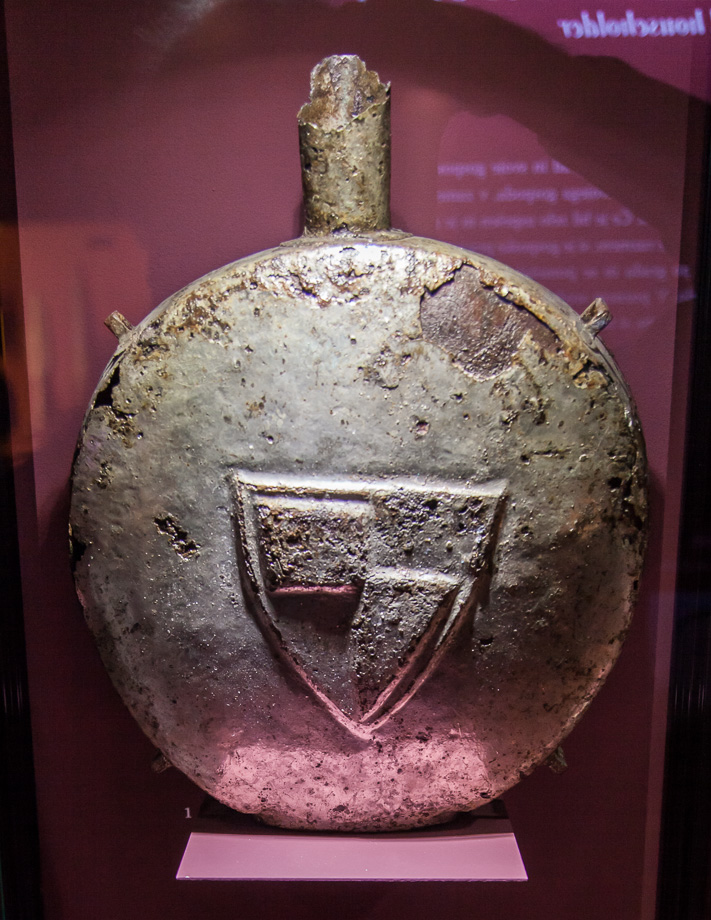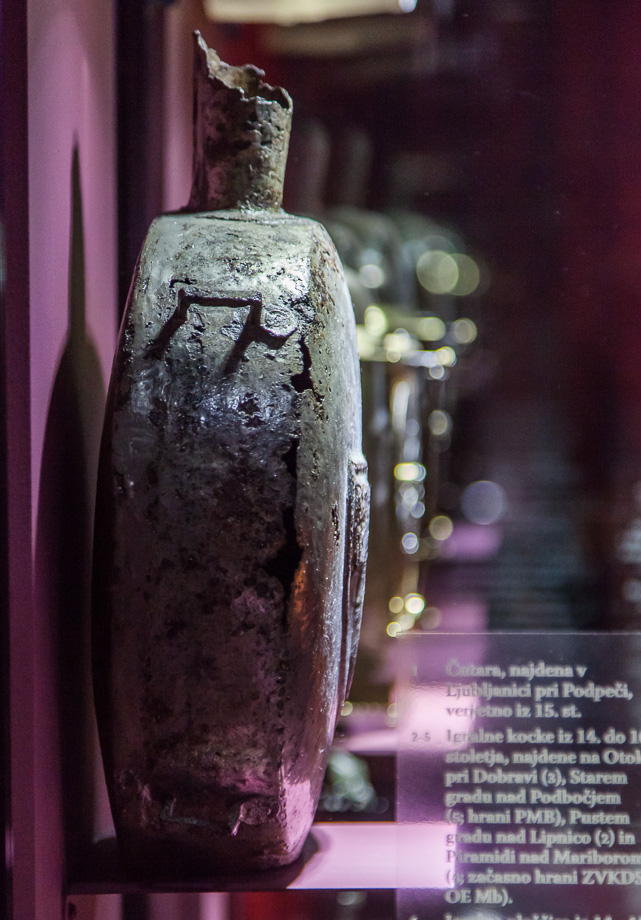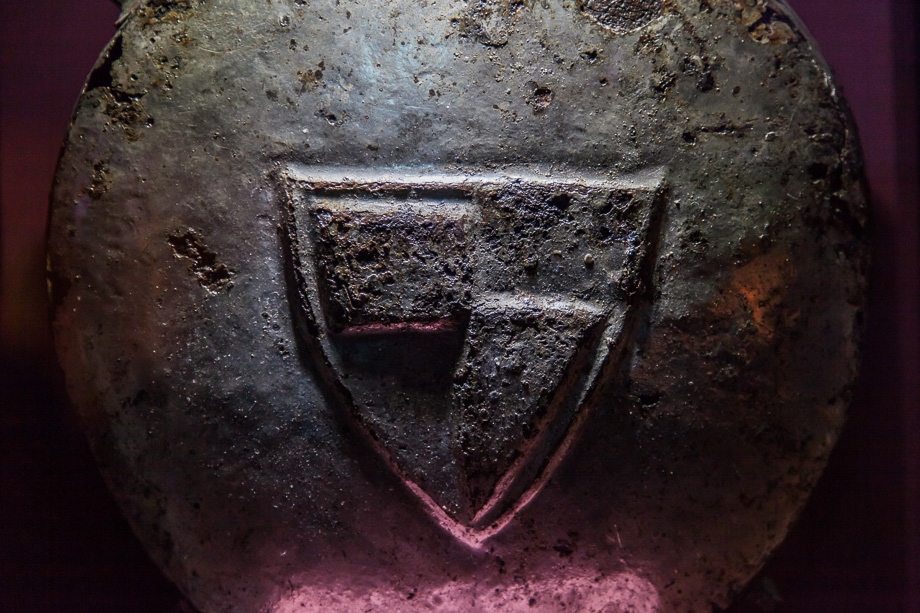Hej to everyone,
I use these types of water-bottles which I bought here:
http://www.lh-shop.cz/index.php?option=com_vi...mp;lang=en
They are leather bags/jugs beewaxed inside - all very fragile to pressure damage during transportation and camp use...and it seems that moths like the inside wax when it is not in use :-(
Pottery shows similar problems with fragility plus greater weight, at least it attracts no moths :-)
So do you have any suggestion / options (I prefer personal experience) for something to keep water in while maintaining greater resistance and low weight for active use in camping and tramping in woods?
- I mean for viking, celtic, ancient, eneolithic or paleolithic time - so please no mediavel or modern plastic suggestions :-)
Tack!
Well i use similar (at least by the look) waterskins as you. I have made all by myself tho.
Imo they are not so easy to damage. If you keep them in your bag or with a loop around the shoulder while you walk, and hang them from, say a treebranch when in camp it is quite okay. Mine have been in the backpack with many items, unless you step on them, or throw your mail and helmet on them, they should be okay. In case of moths, not only the bottles, but also all authentic clothing and fleece are in danger, KILL THEM BEFORE THEY LAY EGGS :lol: :lol:
I also know that in the later tradititon, people who went on their days work on the field had their water or milk with them in wooden "minibarrels". Basically the same thing as a large barrel for mead or beer, but a very small version, that fit 2-3 liters or so...
R
Imo they are not so easy to damage. If you keep them in your bag or with a loop around the shoulder while you walk, and hang them from, say a treebranch when in camp it is quite okay. Mine have been in the backpack with many items, unless you step on them, or throw your mail and helmet on them, they should be okay. In case of moths, not only the bottles, but also all authentic clothing and fleece are in danger, KILL THEM BEFORE THEY LAY EGGS :lol: :lol:
I also know that in the later tradititon, people who went on their days work on the field had their water or milk with them in wooden "minibarrels". Basically the same thing as a large barrel for mead or beer, but a very small version, that fit 2-3 liters or so...
R
| Quote: |
| viking, celtic, ancient, neolithic or paleolithic |
Well, clay would be good for all of those. A Wood barrel that can supply you and your friends would be fine as well, but not individual little wooden barrels. Leather for vikings would be okay. You might be able to use metal canteens, but as far as I'm aware having your own personal drinking bottle/vessel was uncommon and usually a communal supply was used.
imho
Thank you,
to put it straight:
- I am aware of typical leather possibilities - and its weaknesses (=waxed leather bags)
- Clay (if you mean clay = pottery) does not solve my problem - fragility, weight :-)
- Metal means weight, which I try to avoid
- Wood - Do you have some pics of those containers? What is it impregnated with? How much does it weight?
Has someone tried to use something like bladders (of sheep, cow, fish....) ? - which offers minimum weight and when empty one can wrap it to small bundle?
Or maybe to impregnate leather / skin in a different way so that it stays soft and not get hard as with beewax...
to put it straight:
- I am aware of typical leather possibilities - and its weaknesses (=waxed leather bags)
- Clay (if you mean clay = pottery) does not solve my problem - fragility, weight :-)
- Metal means weight, which I try to avoid
- Wood - Do you have some pics of those containers? What is it impregnated with? How much does it weight?
Has someone tried to use something like bladders (of sheep, cow, fish....) ? - which offers minimum weight and when empty one can wrap it to small bundle?
Or maybe to impregnate leather / skin in a different way so that it stays soft and not get hard as with beewax...
What exactly is the problem with the leather bottles covered with wax, im interested in what has happened to Yours, so that you consider them to be fragile.
Leather bottles/costrels can be impregnated with pitch, which could possibly be less brittle, and less attractive to insects.
Basque shepherds have traditionally made a leather container featuring a sheeps bladder or stomach as the inside part.
http://en.wikipedia.org/wiki/Bota_bag
Basque shepherds have traditionally made a leather container featuring a sheeps bladder or stomach as the inside part.
http://en.wikipedia.org/wiki/Bota_bag
A cuir-boulli wax-impregnated water bottle coated on the inside with brewer's pitch is nigh-on indestructable. It is very hard and holds up to most moderate abuse. What I am talking about is basically like this:
http://blog.makezine.com/2011/06/03/how-to-cl...er-bottle/
Clang Armory sells them:
http://clang.adkinssoftware.com/canteen%20pics/canteen%2001.html
http://blog.makezine.com/2011/06/03/how-to-cl...er-bottle/
Clang Armory sells them:
http://clang.adkinssoftware.com/canteen%20pics/canteen%2001.html
In medieval western Europe it seems that drinking from leather water bottles was mainly an English practice among upper levels of society. On the Continent it was considered barbaric and only done by peasants. The French joked that the English drank from their boots.
Pound for pound metal is stronger than any other available material. A metal water bottle should be lighter than any other alternative of similar strength.
I'm currently growing some gourds to give me raw material for experimenting with water containers.
| Quote: |
| - Metal means weight, which I try to avoid |
Pound for pound metal is stronger than any other available material. A metal water bottle should be lighter than any other alternative of similar strength.
I'm currently growing some gourds to give me raw material for experimenting with water containers.
| Dan Howard wrote: | ||
In medieval western Europe it seems that drinking from leather water bottles was mainly an English practice among upper levels of society. On the Continent it was considered barbaric and only done by peasants. The French joked that the English drank from their boots.
Pound for pound metal is stronger than any other available material. A metal water bottle should be lighter than any other alternative of similar strength. I'm currently growing some gourds to give me raw material for experimenting with water containers. |
What did the Continent use then?
| Robert Rootslane wrote: |
| What exactly is the problem with the leather bottles covered with wax, im interested in what has happened to Yours, so that you consider them to be fragile. |
Hej,
the problem is that I have to treat it very gently =
- no strong seize during drinking (pressure)
- when packed I always have to wrap it inside my bag and surround it by soft materials, because when having it ready "on hand" I have to pay great attention to avoid any contact (bushes, trees, rocks)
- sunheat can cause certain softening
- once damaged in those ways the wax impregnation is partly damaged too and it starts to leak....only a little but one is not happy about that :-)
| Bjorn Hagstrom wrote: |
| Leather bottles/costrels can be impregnated with pitch, which could possibly be less brittle, and less attractive to insects.
Basque shepherds have traditionally made a leather container featuring a sheeps bladder or stomach as the inside part. http://en.wikipedia.org/wiki/Bota_bag |
Hej,
thank you for that "pitch" idea. Do you have personal experience or some pitch impregnated bottle?
I once used pitched wooden vessel for beer - it was 30-40 yrs old and the pitch tended to fall off (do not know whether due to age or bad using) - would pitch work with soft leather without falling off soon?
| Marc Blaydoe wrote: |
| A cuir-boulli wax-impregnated water bottle coated on the inside with brewer's pitch is nigh-on indestructable. It is very hard and holds up to most moderate abuse. What I am talking about is basically like this:
http://blog.makezine.com/2011/06/03/how-to-cl...er-bottle/ Clang Armory sells them: http://clang.adkinssoftware.com/canteen%20pics/canteen%2001.html |
Hej,
The basic appearance is much the same like those I own :-) seems the shape is not a problem
cuir-boulli = treated with hot (boiling?) water....that can really make the leather harder and thicker while little bit more brittle (but the shape of vessel would help to overcome that)
Is the wax impregnation done after the "cuir-boulli" and onto dried surface or is it dissolved in the water?
The pitch is used in the end (hot? or boiling?) and put inside (=onto a dried surface) - am I correct?
| Quote: |
|
Hej, thank you for that "pitch" idea. Do you have personal experience or some pitch impregnated bottle? I once used pitched wooden vessel for beer - it was 30-40 yrs old and the pitch tended to fall off (do not know whether due to age or bad using) - would pitch work with soft leather without falling off soon? |
Hej :-)
I have not tried brewers pitch (yet) I have not been able to get hold of it. So do not really know how it ages either. Instead I have experimented with adding oils to the wax to make it softer, but it is still in the experimental stage.
I find that in most circumstances, I really do not need to carry water around. If I am at a camp site, there is usually water available, so I fill up a bucket and place it by my tent. (where it doubles as fire safety equipment) If I am out and about, it is more about being opportunistic. Water is heavy, so the less you need to carry, the better! I always have a scoop or cup at hand, so no opportunity to be offered a drink will be missed ;-)
| Dan Howard wrote: | ||
In medieval western Europe it seems that drinking from leather water bottles was mainly an English practice among upper levels of society. On the Continent it was considered barbaric and only done by peasants. The French joked that the English drank from their boots.
Pound for pound metal is stronger than any other available material. A metal water bottle should be lighter than any other alternative of similar strength. I'm currently growing some gourds to give me raw material for experimenting with water containers. |
Hej,
You may be right with weight - if the metal is really thin (presumably 0,5-1,0 mm) - Do you have some such bottle? What is the volume? How much does it weight?
As far as metal is considered I know only about metal bottles roman legionarii used - do you have some other examples?
to gourds:
on that I know that only some special kinds of gourd can be used to store water - others simply (after getting rid of the soft tissue and drying) get wet and start to rot when used as water containers (personal experience) :-)
| Bjorn Hagstrom wrote: | ||
Hej :-) I have not tried brewers pitch (yet) I have not been able to get hold of it. So do not really know how it ages either. Instead I have experimented with adding oils to the wax to make it softer, but it is still in the experimental stage. I find that in most circumstances, I really do not need to carry water around. If I am at a camp site, there is usually water available, so I fill up a bucket and place it by my tent. (where it doubles as fire safety equipment) If I am out and about, it is more about being opportunistic. Water is heavy, so the less you need to carry, the better! I always have a scoop or cup at hand, so no opportunity to be offered a drink will be missed ;-) |
Hej!
I am very curious about the oil-wax experiment - let me know when you have results :-)
I can agree with you in the rest - water is heavy (as is most of "living" gear :-) ), use chance to drink whenever possible (not only ale, mead or wine :-) )
- what I am using my water bottles and bags is when I am not in the camp on historical festival but in the woods with no backup - at this point one has to have some water on him
- with some map I can plan my "living" trip with some chances to get water but the small creek can disappear during the hot summer or water can be polluted (dead animals)....or one can go "blind" no maps no civilization no problems exept for food and drink :-)
| G. Freeman wrote: |
| You may be right with weight - if the metal is really thin (presumably 0,5-1,0 mm) - Do you have some such bottle? |
Only modern canteens.
| Quote: |
| As far as metal is considered I know only about metal bottles roman legionarii used - do you have some other examples? |
No medieval ones. My comment was to correct a misperception that a metal canteen would be heavy, but I don't know whether it is "period"
| Quote: |
| to gourds: on that I know that only some special kinds of gourd can be used to store water - others simply (after getting rid of the soft tissue and drying) get wet and start to rot when used as water containers (personal experience) :-) |
Yep. They have a few problems, but they were popular during the Roman period. I'll probably use a modern sealer to line them rather than wax or pitch.
| Dan Howard wrote: |
| In medieval western Europe it seems that drinking from leather water bottles was mainly an English practice among upper levels of society. On the Continent it was considered barbaric and only done by peasants. The French joked that the English drank from their boots. |
This.
It's somewhat anachronistic (and from what I've experienced, prevalent among re-en-actors) that everyone had their own personal water bottle.
I still think that, for the time periods you're going for, ceramic or a wooden communal barrel/cask. It'd have to be transported separately on a baggage cart or something.
I found lining gourds with beeswax seals them well and stops the liquid from tasting of old gourd. they now just taste of beeswax and old gourd......
One source for Brewer's Pitch is Jas. Townsend:
http://jas-townsend.com/product_info.php?products_id=373
To make one yourself, you bascially fill the sewn wet leather with fine sand. You fill it up, then pack it down, then fill it some more and pack it some more to stretch and shape the leather. Then you let it dry, pour out the sand, rinse it out, yhen coat the outside with beeswax and treat it inside with the Brewer's Pitch which is melted, poured in, swirled around while still hot, with the excess drained out.
Even though it is brittle, if you use a thick leather to begin with, it will take quite a hit to break it. I would not want to be hit in the head with my flask, the bone will break before the leather does.
http://jas-townsend.com/product_info.php?products_id=373
To make one yourself, you bascially fill the sewn wet leather with fine sand. You fill it up, then pack it down, then fill it some more and pack it some more to stretch and shape the leather. Then you let it dry, pour out the sand, rinse it out, yhen coat the outside with beeswax and treat it inside with the Brewer's Pitch which is melted, poured in, swirled around while still hot, with the excess drained out.
Even though it is brittle, if you use a thick leather to begin with, it will take quite a hit to break it. I would not want to be hit in the head with my flask, the bone will break before the leather does.
I'd buy something like this in a heartbeat! This large canteen (I think diameter is more than 20 cm) was found in river Ljubljanica, Slovenia, and is dated in 15th century. I think it's iron, covered in pewter.






Page 1 of 2
You cannot post new topics in this forumYou cannot reply to topics in this forum
You cannot edit your posts in this forum
You cannot delete your posts in this forum
You cannot vote in polls in this forum
You cannot attach files in this forum
You can download files in this forum
All contents © Copyright 2003-2006 myArmoury.com — All rights reserved
Discussion forums powered by phpBB © The phpBB Group
Switch to the Full-featured Version of the forum
Discussion forums powered by phpBB © The phpBB Group
Switch to the Full-featured Version of the forum